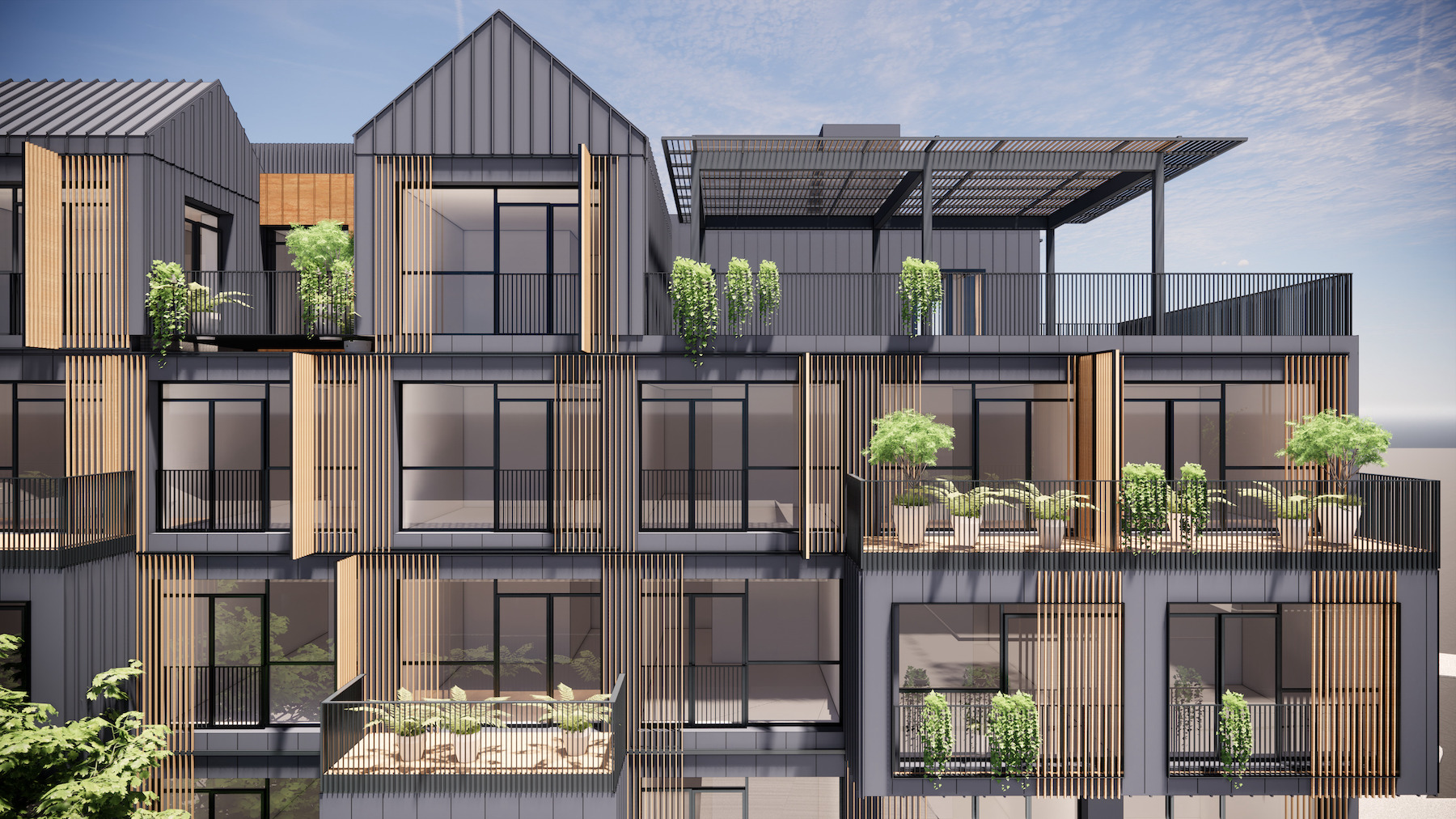BuiltWorlds’ research contains the subject of modularization and prefabrication, which holds significant prominence in the ever-changing built world. This topic is even included as a subsection within our Benchmarking Program’s “Offsite Construction” category. Within this piece, we will be examining the use of both modularization and prefabrication in projects within the AEC industry.
ARE YOU A CONTRACTOR INTERESTED IN BETTER UNDERSTANDING YOUR TECH STACK?
What are modularization and prefabrication?
Both modularization and prefabrication are construction methods that involve off-site fabrication of building components, all produced before on-site assembly. They provide a multitude of benefits such as increased efficiency, quality control, shorter construction times, and a reduction of associated costs. Modularization produces building modules in a controlled factory environment that are then delivered to the site to be assembled. This permits simultaneous off-site fabrication and on-site preparation, which offers flexibility and assures accurate construction. Prefabrication manufactures building components off-site, where they are then assembled on-site. Modularization is connected to the self-contained portion of a building, while prefabrication surrounds a broader range of building components.
Modularization and Prefabrication at the 2023 Buildings Conference
In mid-March, BuiltWorlds hosted the 2023 Buildings Conference in Chicago which served as a space to discuss utilizing emerging technologies and innovation to give momentum for the future of the AEC industry. The conference featured two sessions dedicated to modularization and prefabrication, with industry experts provided their knowledge and resources. The two sessions were entitled: “How Prefabrication, Lifecycle Costing, and Other Factors are Changing the Role of the Contractor in the Design of Buildings” and “The Nuances of Modular/Prefab: Modular Development & Modular Construction and the Impact on How we Build”. Below will be key quotes from the sessions.
“There is sometimes a tendency to just jump ship, like when you test [a solution] out, you get uncomfortable with it, and you don’t stick with that technology or process long enough to unlock its true potential… There’s so many companies out there that I know that ‘use’ BIM but don’t really use BIM. No one’s really used it properly or put in the effort to figure out the true potential of know what it really means.” Belinda Carr, Prefab Research Coordinator, DPR Construction
“I think there are two big pieces to getting to real big numbers as a result of modular prefab. The one is: What does it really take to get to manufacturing?... The other side is: How do you take down the economics?” Aaron Holm, Co-CEO, Blokable
Trends within the space
Even though modularization and prefabrication have gotten bad press from high profile failures over the years including: Katerra’s bankruptcy, Skender’s modular business closure, the cancellation of Google’s Sidewalk Labs Quay Project in Toronto, and the lawsuits surrounding Forest City in Brooklyn, there is still a growing traction within modular projects.
An exciting feat within the prefabrication field is FullStack Modular’s current California project, which will supply 200 complete modules for Treehouse Hotel’s first property in the United States. They will produce the modules in a manufacturing plant, all complete with electrical, plumbing, and mechanical components installed, making the installation of elevators and hallways the only on-site construction needed for the project. This project implements volumetric modular construction, which will help to shorten development time, while increasing the project’s quality and consistency.

Modulus is a pioneer within advanced software and systems development that will support modular delivery. They implement a software platform, called TESSA, that generates optimized design solutions in real-time that include a cost plan breakdown and sustainability metrics. Modulus then uses its systems to aggregate layouts to create a final design that is cost effective and technically feasible. The Kit of Parts is then manufactured and delivered to facilities where it will be assembled. The modules are then quickly assembled with a standard crane, decreasing delivery time, and noise pollution.
A look Ahead
We are digging deeper into modularization and prefabrication at the 2023 Americas Summit in September where we will be able to present some of the latest findings from our member Benchmarking Survey on modularization and prefabrication and also from our Solutions Survey. As the space continues to grow and evolve, we are excited to continue to connect with different stakeholders who find value within these solutions.



Discussion
Be the first to leave a comment.
You must be a member of the BuiltWorlds community to join the discussion.